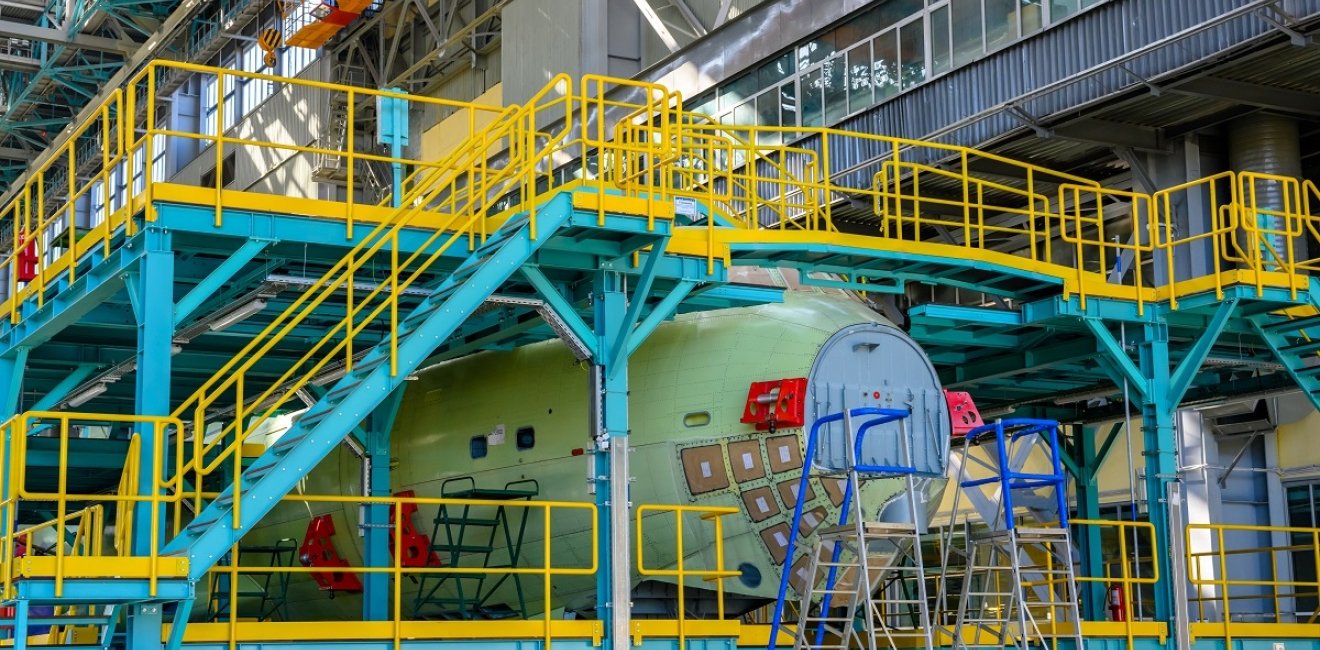
A blog of the Kennan Institute
Putin’s regime is feeling confident these days. Advances on the battlefield in Ukraine, expansions in armaments production, and the dithering of Republicans in the U.S. Congress show the war has turned in Russia’s favor. A well-orchestrated presidential election and some real public support buoy the regime. Political opponents are either dead, in prison, or in exile.
Putin’s regime has also declared victory in blunting Western sanctions and now plans to permanently thwart them with programs of import substitution. Nowhere is this better seen than in aviation, where the state proclaims it will produce over a thousand new airplanes to replace the foreign aircraft its airlines have long flown.
But this bold vision for aviation autarky has little chance of succeeding.
Russia’s Short-Term Success in Blunting Aviation Sanctions
Thus far, Putin’s regime has weathered aviation sanctions through a two-pronged strategy. First, Russian airlines illegally kept about 400 foreign airplanes—primarily Airbuses and Boeings—owned by foreign leasing companies. Second, the state bankrolled settlement claims in order to purchase some of these airplanes so that airlines could fly them abroad without risk of repossession and reduce their foreign debt. To date, approximately 170 foreign airplanes have been legally acquired in this fashion, and the Ministry of Transportation recently asked for more cash to continue settling claims on the remaining 230 foreign planes.
The next question is how long Russian airlines, from the state-owned flag carrier Aeroflot to private companies such as S7 and Ural Air Lines, can continue flying their foreign planes. As I wrote in late October, safety has been degraded far less than predicted. But in the absence of spare parts, software updates, and thorough maintenance by foreign providers, Russian airlines have about two years before they will have to ground Boeings and Airbuses for major repairs performed using third-party spare parts.
Anticipating the eventual retirement of foreign planes, Putin’s regime has embarked on a massive program to make all-Russian airplanes. This program promises independence from Western technology and leasing companies but reveals the success of sanctions and fundamental weaknesses in state capacity.
The 2030 Aviation Manufacturing Plan
Announced in June 2022, the program calls for the state-owned industrial conglomerate Rostec to manufacture 1,036 airplanes with only Russian parts by 2030. In January 2024, the state allocated 283 billion rubles (U.S. $3.1 billion) to help finance the production of 609 airplanes and prioritize medium-haul aircraft in the overall manufacturing plan.
Before sanctions, Russian manufacturers produced a small number of narrow body, medium-haul airplanes such as the MC-21 and the Superjet-100 (SSJ-100) with Western components. Twelve SSJ-100s were manufactured in 2021 and ten the following year.
Among the aircraft slated to replace Boeings and Airbuses, the plan called for production in 2023 of three medium-haul Tupolev-214 (Tu-214) airplanes and two Superjet-NEW planes (Superjet-100s with all-Russian parts). None of these were built. In fact, the state-owned United Aircraft Corporation (UAC) failed to manufacture a single passenger airplane in 2023.
More recently, the UAC conceded further delays of up to two years for rollout of the MC-21, SSJ-NEW, and Tu-214, as well as of smaller, short-haul aircraft such as the Ilyushin-114 (Il-114) and the “Baikal.”
The transition to total import substitution is proving difficult, making it impossible to fulfill early targets of the manufacturing plan. By withdrawing access to Western technology critical for manufacturing, sanctions have successfully shut down production. Russian manufacturers will produce at best inferior aircraft that fly shorter routes using more fuel.
At its current rate, the UAC is unlikely to manufacture more than a dozen or so showcase narrow body airplanes before 2030. The manufacturer may have better luck producing simpler planes, such as the Baikal, but the state’s injection of 283 billion rubles doesn’t target its production or that of two other short-haul airplanes.
Since the UAC will likely not meet the plan’s annual targets any time soon, Russia’s airlines will have to make do with their aging foreign airplanes and acquire spare parts from third parties. Putin admitted as much at his call-in event in December 2023, during which he praised the import-substitution plan but added that the government would continue to purchase illegally held foreign planes.
What Will Russia’s Aviation Manufacturing Plan Actually Produce?
Rather than produce new aircraft, the immediate purpose of the state’s manufacturing plan is political theater. The infusion of 283 billion rubles was meant to show the public, before the presidential elections, that Putin’s regime is serious about securing commercial aviation and to generate a sense of normalcy in the midst of war.
In the long run, the manufacturing plan is more likely to produce further distortions in Russia’s political economy. These include corruption, secrecy, technologically backward aircraft, and even more state control over commercial aviation.
The 283 billion rubles will help Rostec keep state-run subsidiaries such as the United Engine Corporation operating with soft budget constraints and favorable contracts that now lack any competition from Western firms. Executives will siphon off their share of the funds, while Putin’s regime will turn a blind eye as long as everyone remains loyal.
If the manufacturing plan continues to falter, state-owned manufacturers will have more incentive to keep their failures secret. In 2023, for example, the Ural Civil Aviation Factory kept hidden cost overruns for the Baikal. When news of a 48 percent increase was finally publicized, Putin’s point man for the Far East region, Yuri Trutnev, was incensed and proclaimed, “Our people are like that: they don’t like to share information.”
For now, Putin’s regime allows the Russian business media to report fairly openly about the country’s aviation industry on issues such as spare parts and safety, state subsidies, and shortfalls in production. But if commercial flying becomes more precarious and the manufacturing plan remains unfulfilled, the government will likely limit what the public knows about its airlines and long-term plans to maintain them.
As the economic historian Mark Harrison shows in his recent book, Secret Leviathan, secrecy in the Soviet era significantly degraded state capacity in many areas, including production. Post-Soviet autocrats face a similar “secrecy/capacity tradeoff,” while newer techniques of disinformation further erode capacity. In attempting to revive the Soviet Union’s autarkic aviation industry, Putin’s regime will find it hard to avoid similar reductions in capacity.
Insofar as Russia’s commercial aviation industry is concerned, the lesson for the West is that it pays to play the long game. Russia has effective tools for blunting sanctions in the short run, but in the long run it faces structural obstacles and the absence of Western technology, both of which will degrade this economic sector. The main question remains whether the United States and its allies can keep up the pressure by enforcing sanctions.
The opinions expressed in this article are those solely of the author and do not reflect the views of the Kennan Institute.
Author


Kennan Institute
The Kennan Institute is the premier US center for advanced research on Eurasia and the oldest and largest regional program at the Woodrow Wilson International Center for Scholars. The Kennan Institute is committed to improving American understanding of Russia, Ukraine, Central Asia, the South Caucasus, and the surrounding region through research and exchange. Read more

Explore More in The Russia File
Browse The Russia File
Chechnya as a Model of Modern Russia

Russia’s Indigenous Communities and the War in Ukraine

Gas and Power in a Changing US–Russia Relationship

